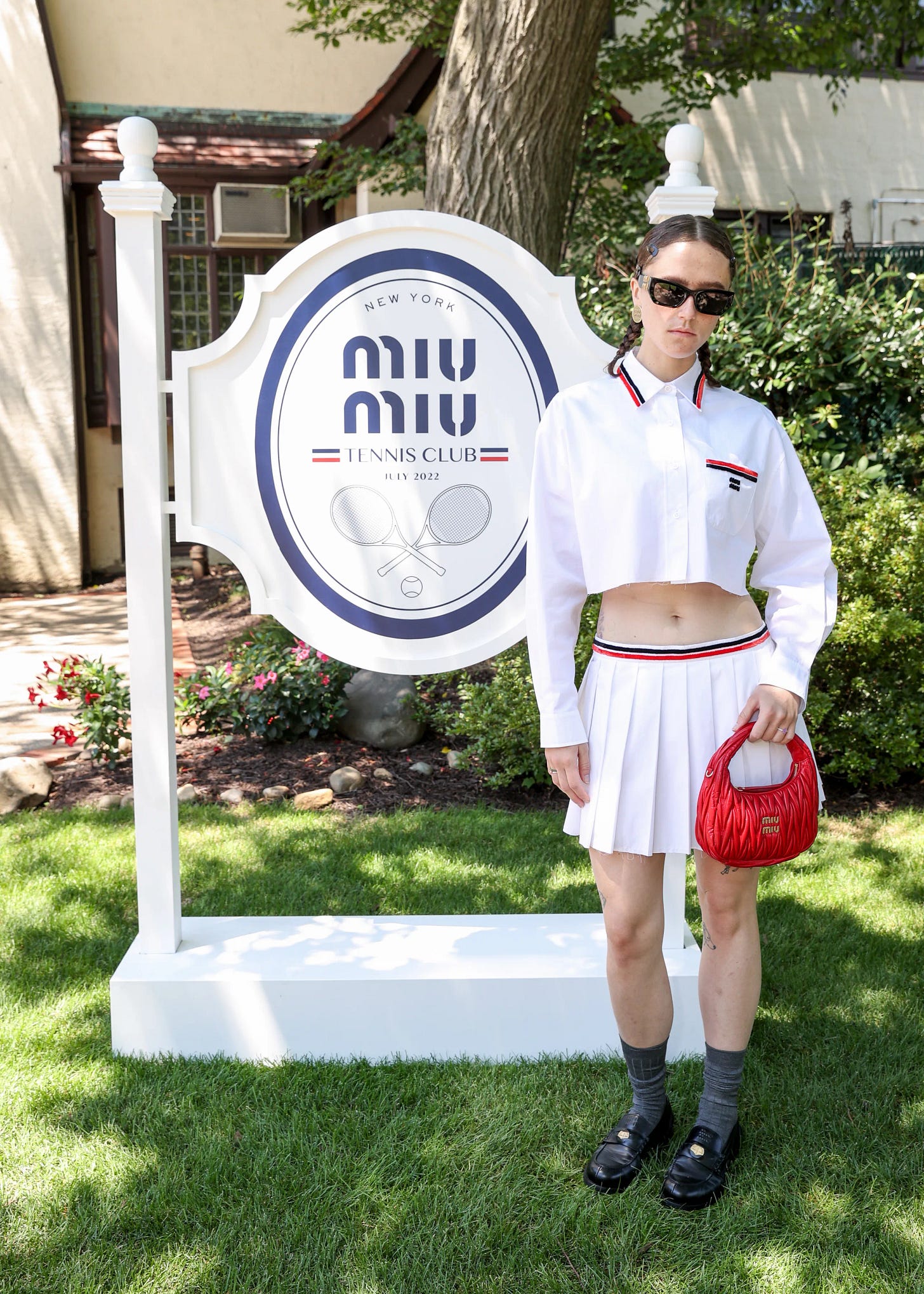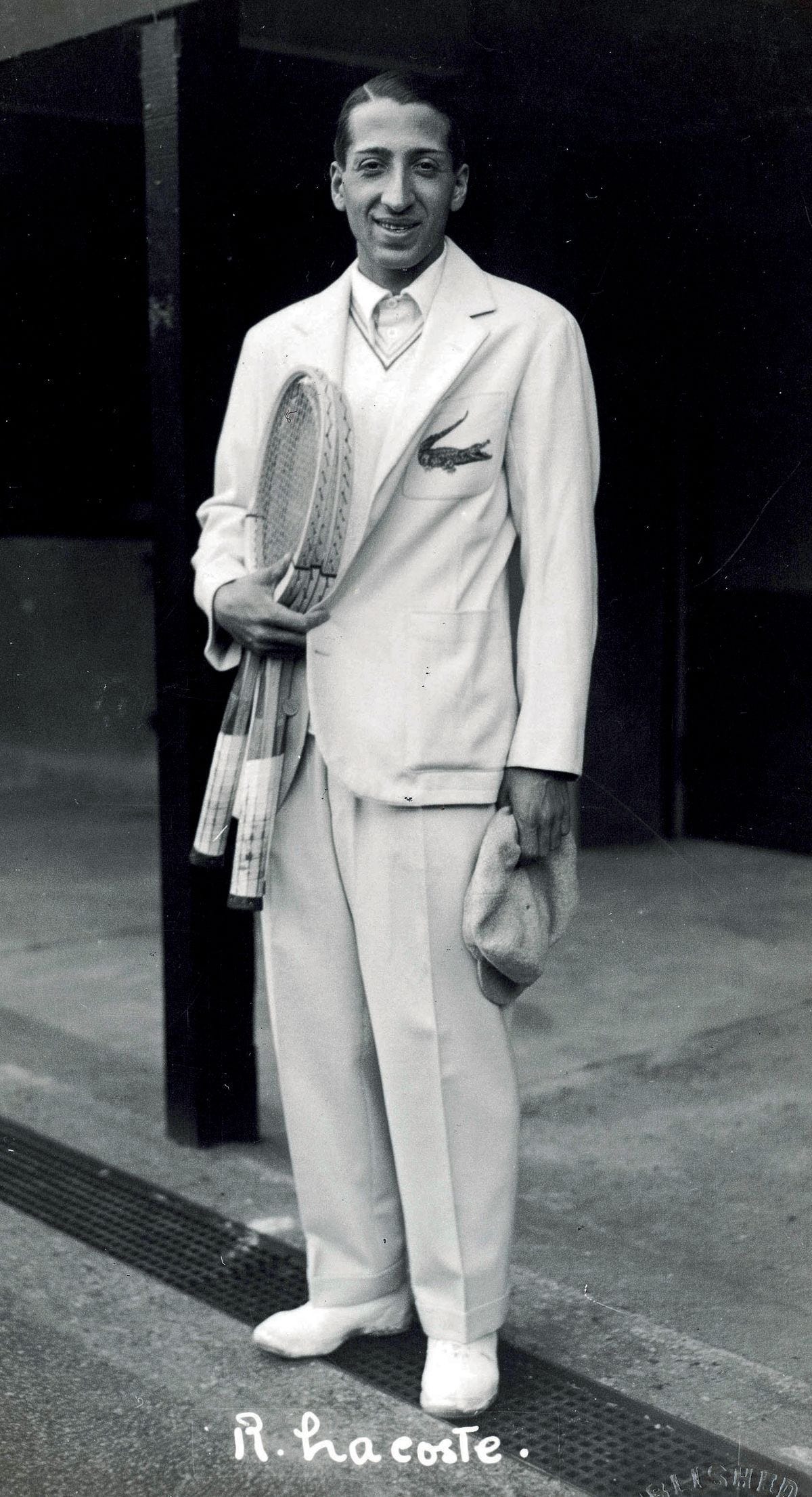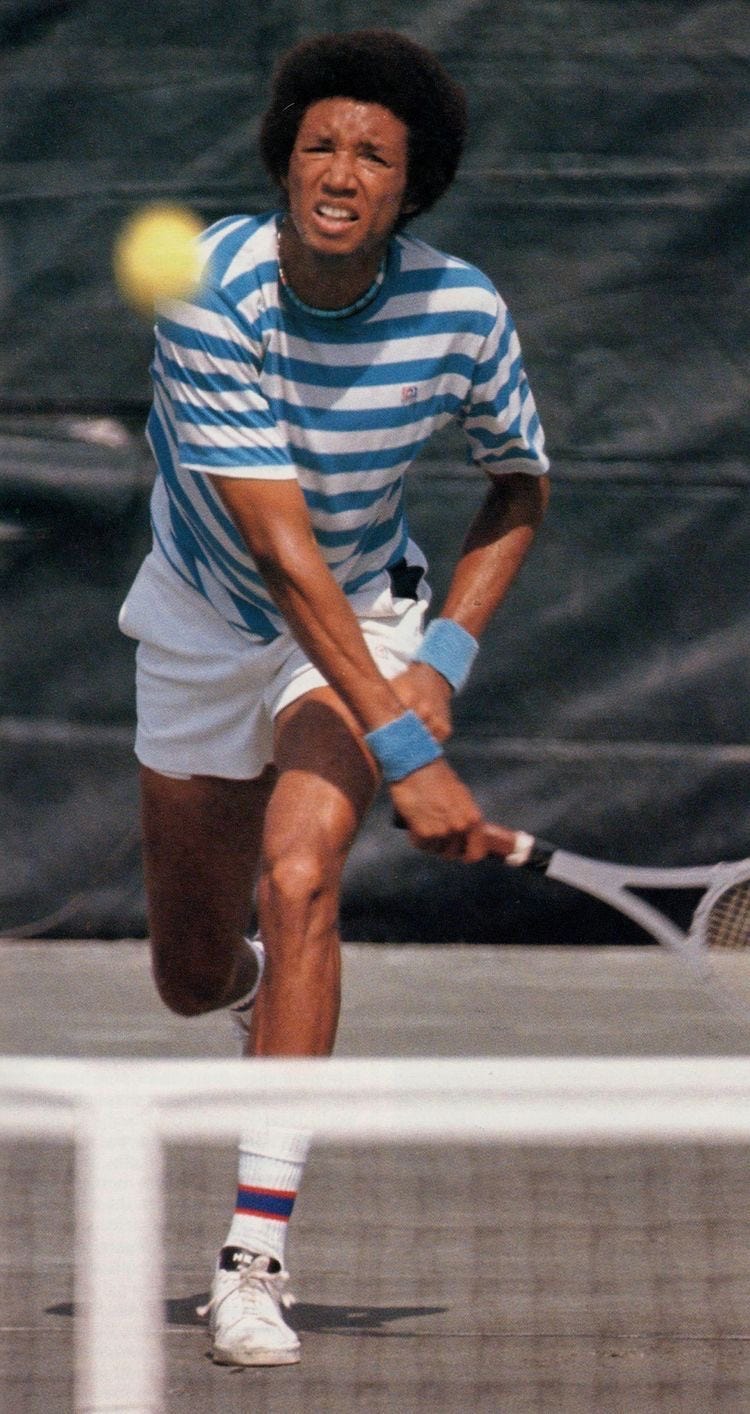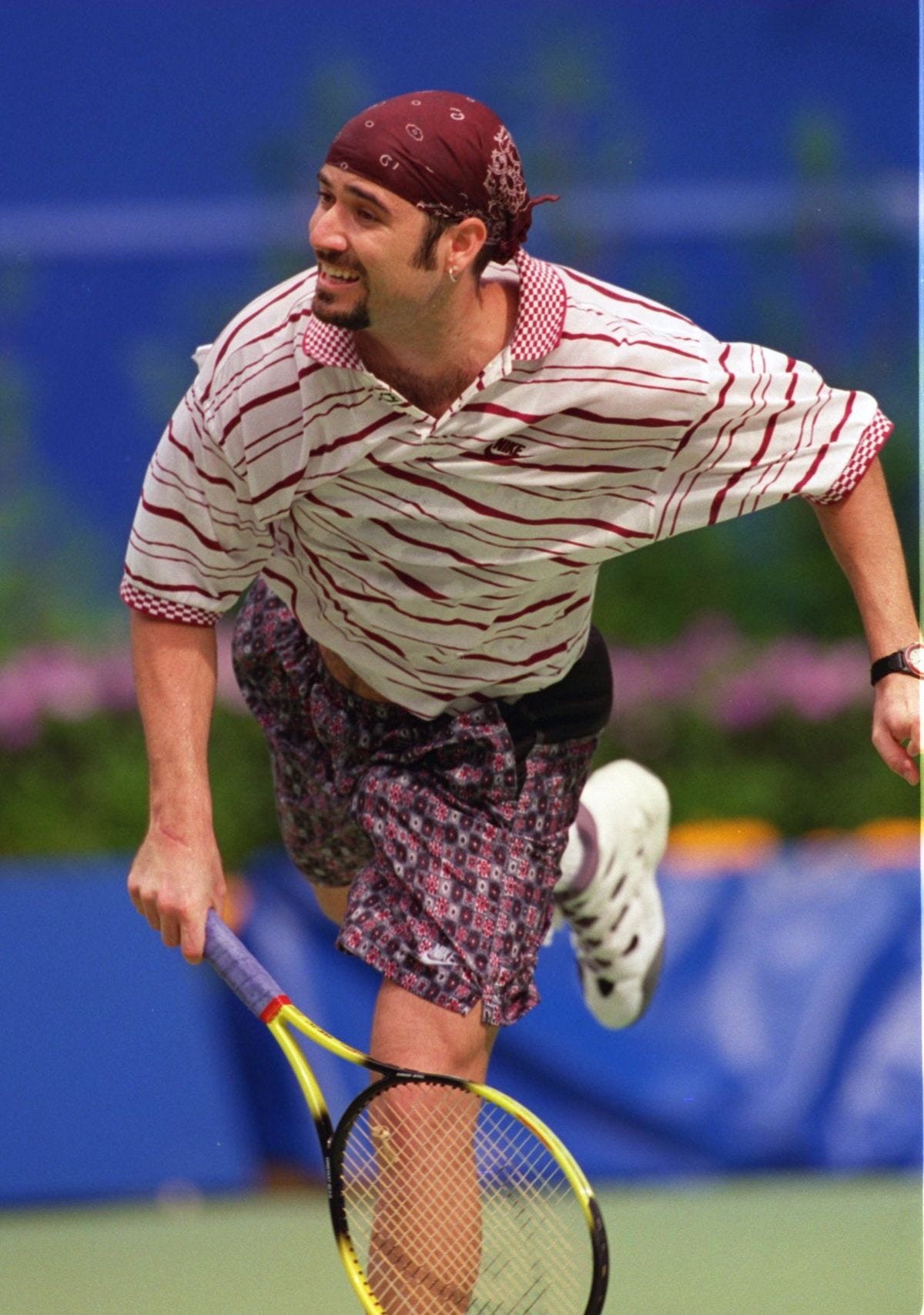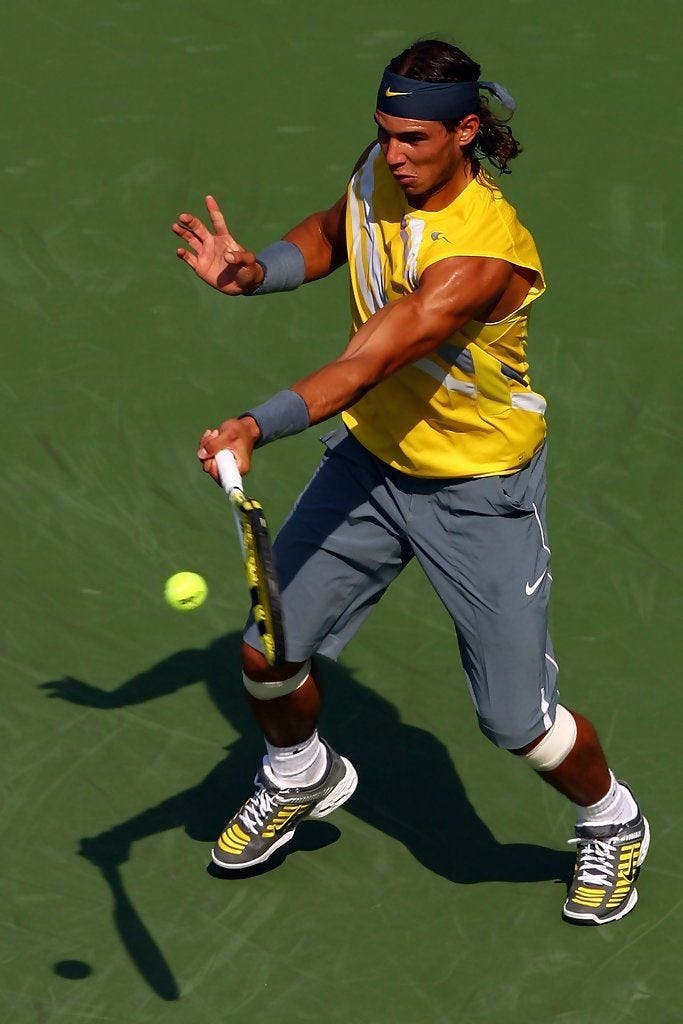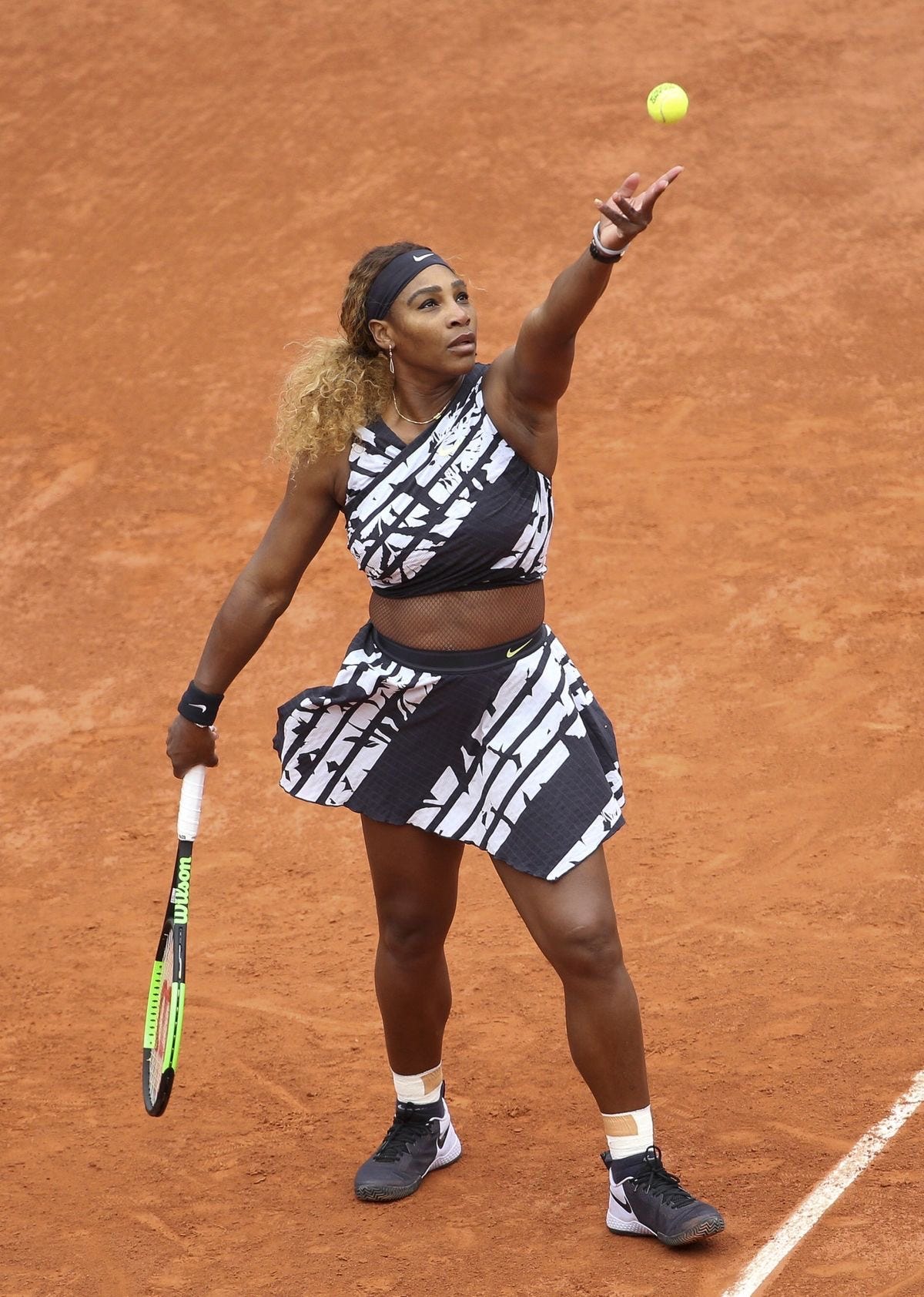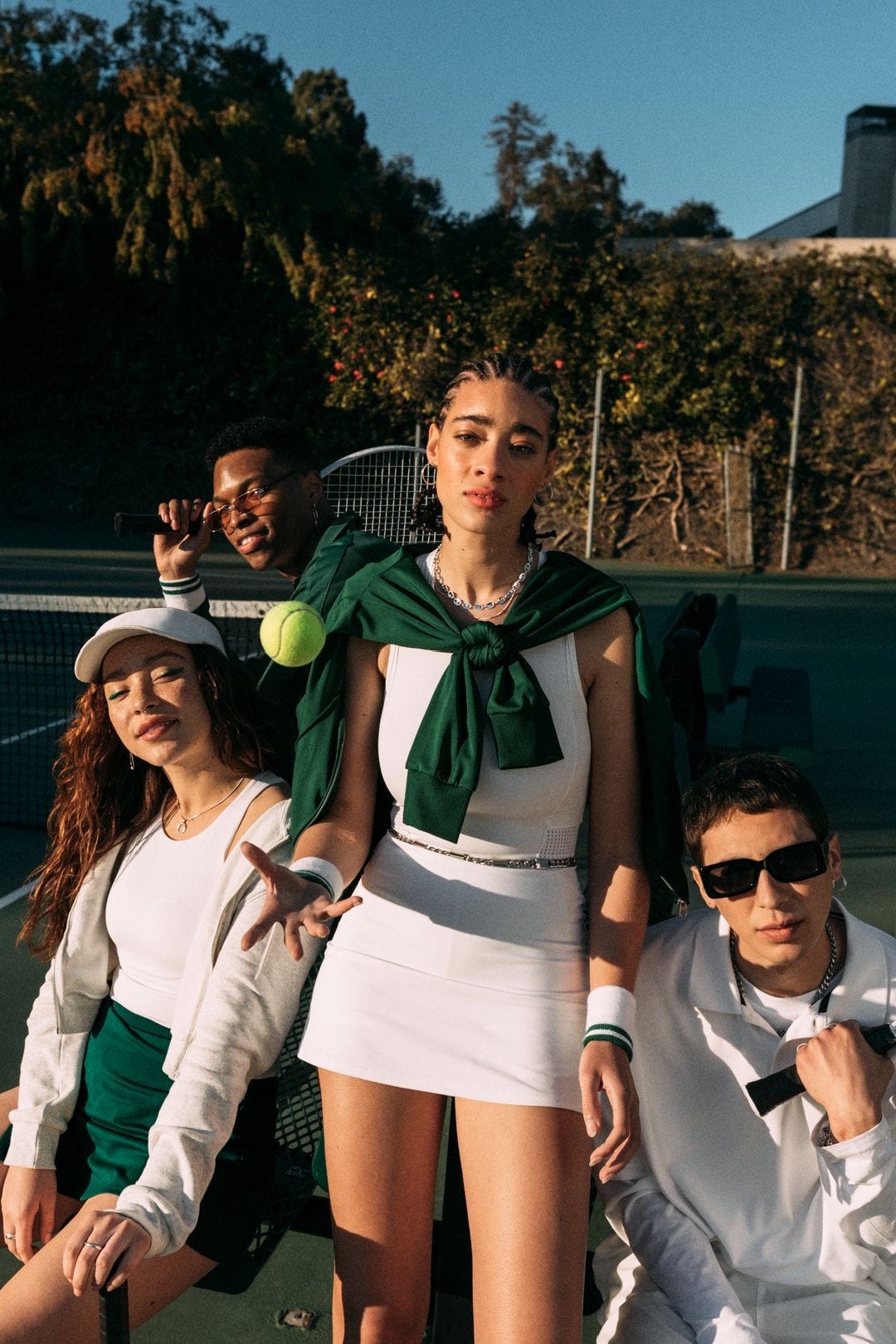Death to #tenniscore
Disappointingly, the covid-era internet trend is still influencing our on-court fashion
Today, Asics dropped a continuation of their A.P.C. collaboration releasing uninspired solid colored and gradient garments along with two “new” Gel-Kayano 14s in white and fog. The collaboration is a part of an ongoing creative partnership between the brands which began in 2022.
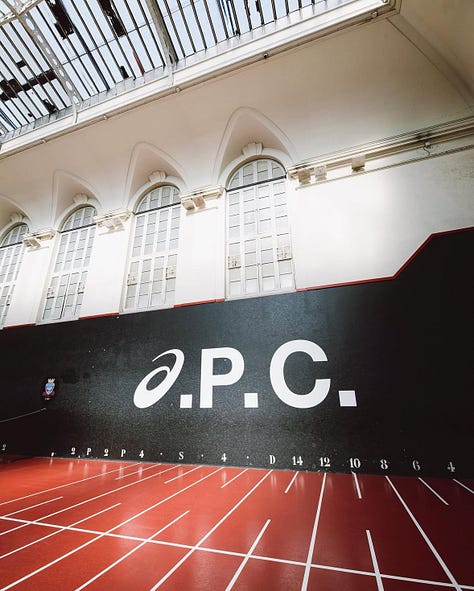
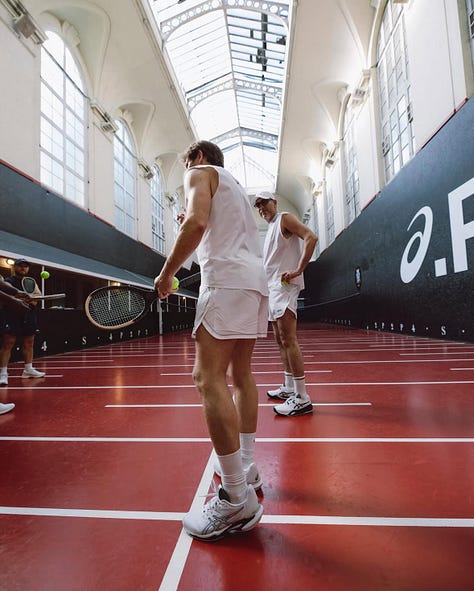

I find collaborations like this disappointing and a bit eye-rolly (🙄). The solid neutral tones and the millennial minimalism copies #tenniscore mood boards that dominated covid-era tennis when quiet luxury was a cultural phenomenon. Other brands like Lacoste, Sporty & Rich, and even Miu Miu have leaned into this trend as well mixing Wimbledon looks with an influencer spin.
“Tenniscore” is a fashion trend that comes from the classic tennis style. White pleats, polos, knits, preppy looks but worn as everyday fashion. It’s less about playing tennis and more about the feeling that tennis evokes.
Why I hate #tenniscore
To me, the tenniscore trend is a response the over-commercialization and the lifestyle content-ification of the sport.
Tenniscore came onto the scene in 2021 after many were leaning into the athleisure thing during lockdown. Exploring new, outdoor activities to fight boredom and isolation mixed with micro social-media trends caused a variety of fashion “cores” to be formed.
In 2022, I wrote an article for Nylon about tennis fashion stating:
“Tennis is gaining its footing as a leader in professional sports. With the help of quarantine, it became a popular social distance sport in 2020, and what to wear while playing has been on the top of everyone’s search queries lately. According to Depop, searches increased by 218% for ‘tennis polo’ between March and July, while searches for the ‘tennis shirt’ also peaked in July, increasing by 157% since the beginning of 2022. Interest in heritage brands like Lacoste, Ralph Lauren, and Wilson have greatly jumped in August alone.”
While these heritage brands have a place in tennis fashion and have influenced the sport’s aesthetic, wearing only minimalistic, preppy, country club clothing is cosplaying being a tennis player and ignoring the rich history of tennis fashion in the 70s, 80s, and 90s. However, I want to do a quick timeline of how we got here.
How did we get to #tenniscore
Tennis fashion did begin at the country club with preppy polos and knee-length shorts. Icons like Fred Perry and René Lacoste led the charge to move tennis clothing into less restrictive, everyday wear.
It wasn’t until the late 60s when tennis was becoming televised and visibility on the court began to matter and brands started paying attention.
1970s
By the 70s, tennis fashion had broken away from the all-white country club look. The decade saw an explosion of color, striped socks, and short shorts. Major players were Björn Borg, Arthur Ashe, and John McEnroe. Additionally, back then players didn’t have official practice kits, allowing them to express themselves on court sponsor free.
1980s
The 80s saw large graphics and prints that players like Andre Agassi and Gabriela Sabatini pioneered. This era was rebellious in tennis fashion and allow tennis players to express themselves and be individualistic. This started pushing boundaries in tennis fashion until Nike and Adidas became major sponsors in professional tennis.
1990s
The 90s was about mixing street style and technical clothing. We saw advancements in sneakers during this era especially from Nike athletes like Agassi and the Williams sisters. This is where the over-commercialization of tennis begins and players become fashion icons by being put in the spotlight.
2000s
Serena and Venus Williams continued to revolutionize tennis fashion with statements on court. Nadal also brought his own personal style and flash to tennis with bright colors, ultralight fabrics, and technical designs.
2010s
Collaborations begin with the likes of Maria Sharapova and Nike, Serena and Virgil Abloh for Off-White/Nike. Federer grabs a Uniqlo deal. Traditional and minimal kits start to sneak back into the mainstream.
By the 2020s, tennis is a large entertainment industry that is hyper-commercialized. Players pull major endorsement dollars and apparel sponsorships can be above $100 million.
#tenniscore sells a fake lifestyle
Somehow we came from sponsor-less personal expression and got to exclusive micro-drops that harp on a false image of tennis in an idolized past.
To advance tennis fashion we must learn to reject tradition and elitist legacy brands. Play in your old t-shirts. Wear out your shoes from the 2010s. Put on things not traditionally seen on the tennis court. Tennis is about being gritty and sweaty on the court—not about looking good to get coffee after (but you can also still look good to get coffee after).
🎤 Shoutouts
⏮️ My Last Post: Ben Navarro’s Emerging Tennis Empire
🤓 Suggested Read: BAGEL Magazine - BAGEL magazine captures tennis’s increasing diversity, influence on fashion and participation in popular culture.
🤓 Suggested Read: Carlos Alcaraz rankings target takes as hit as he is handed nightmare Monte-Carlo Masters draw
🤓 Suggested Read: Sinner says he is 'innocent' and doping ban 'unfair'





